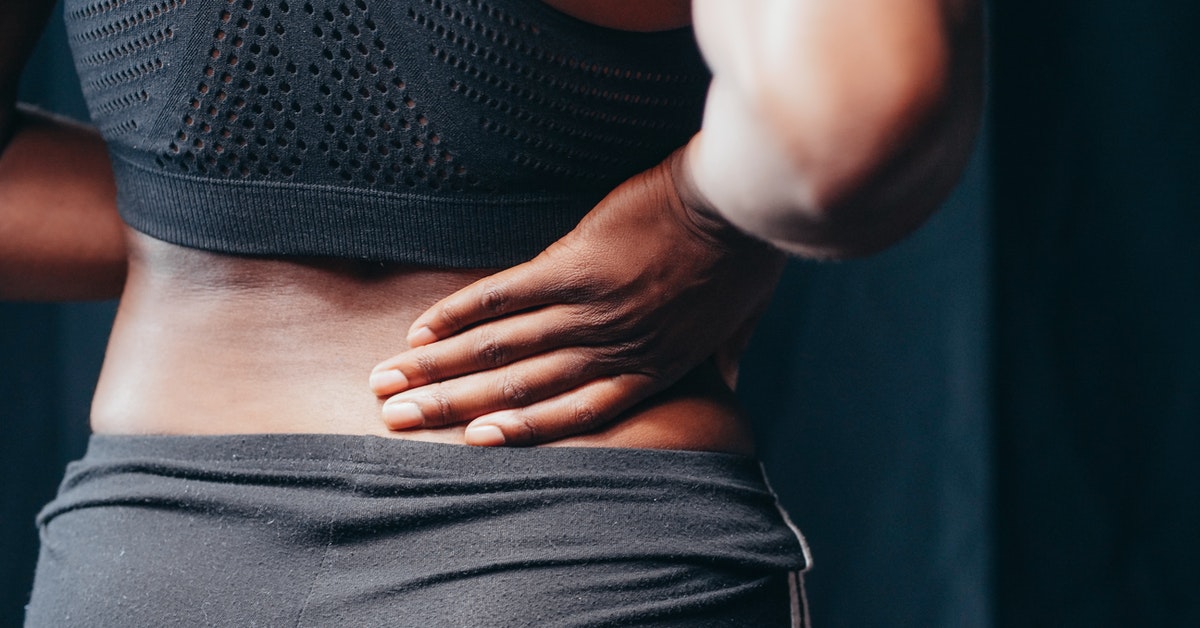Nearly every adult complains of occasional back pain, and for some of us, it becomes a chronic problem. Sometimes the reasons are obvious, say if you’ve been in a car accident or know you have a condition like scoliosis. There are other less apparent reasons why you might experience back pain. You don’t have to accept an achy back as a normal part of adulting.
See an experienced Tennessee Chiropractor to find out if one of these four things is hurting your back.

1. Foot and Gait Problems
Your feet each have three arches, and they work together to cushion your body from shock and make your movement more efficient. If something goes wrong with your feet, you can feel it all the way up your body. Many of our clients come in complaining of knee, hip, or lower back pain and find relief after we address their foot problems. The word “gait” refers to how a person walks and places their feet. Overpronation and underpronation are two of the most common foot issues that affect gait.
Normal pronation is the ideal foot placement. The outside part of the heel makes initial contact with the ground, then the foot rolls inward about fifteen degrees, makes complete contact with the ground, and pushes off with the forefoot. Normal pronation allows your foot to optimally support your body weight and keep your other joints aligned.
In underpronation, the foot doesn’t roll inward as much as it should, and most of the work is done by the outside of the foot and the smaller toes. Underpronation is common in people with high arches. When your foot rolls inward more than fifteen degrees, it’s called overpronation. Overpronation puts more pressure on the inside of the foot and the lower leg. This gait makes it difficult for your ankle to stabilize your body. People with low or no arches typically also have overpronation.
Both of these problems and the associated low or high arches can cause knee, hip, and back pain. Fortunately, they can be solved with custom orthotic shoe inserts. Custom orthotics are molded to match your specific needs and work to support the foot’s arches and correct your gait. This leads to better joint alignment and shock absorption.

2. Bad Posture
This one may not seem “sneaky” since you’ve heard about it ad nauseam, but it’s easy to have bad posture and not realize it. Many people pay attention to their posture while standing and walking but slouch while sitting. Since most of us sit for hours at work, your sitting posture can hugely affect your back.
Hunching forward causes micro-tears in your neck and upper back muscles. The scar tissue your body uses to repair these tears is less flexible than normal muscle tissue. Over time scar tissue build-up can lead to stiffness, pain, and limited range of motion.
If the idea of actually tearing your muscles isn’t bad enough, you can also change the curves of your spine. The cervical curve in your neck is particularly susceptible to straightening due to bad posture. Even a small loss of cervical curvature is associated with stretching the brain stem. Yikes!
So how can you improve your posture and avoid these nasty consequences? We recommend starting with a more ergonomic workstation. Adjust your computer screen so it’s at eye level, and make sure your feet or touching the floor and your lower back is supported. If you’ve perfected your workspace but still find yourself hunching forward, it may be time to try a posture-improving gadget.
Several “posture reminder” type gadgets exist. They typically attach to your upper back and work with your smartphone to alert you when you are hunching over. These can help you get into better sitting habits. Long term slouchers should also consider getting a chiropractic adjustment. It can be difficult to correct your posture if your upper back is out of alignment.

3. Heavy Loads
You may have seen news stories about the damage kid’s increasingly heavy book bags are doing to their backs. But have you thought about the stuff you lug around all day? Carrying a heavy purse, laptop bag, diaper bag, or child can do a number on your back.
Correct carrying is key. The best way to carry your toddler, for instance, is on one hip but make sure to switch between hips. Babies, purses, and laptop bags should all be carried in a way that balances the weight across your body. Backpack-style bags and baby carriers are the best kinds. They should be worn high up on the back and ideally have a supporting strap around the waist. If you are wearing your infant on your chest instead of your back, you should also position the carrier up high and ensure it’s close to your body. Switch to back carriers when your child weighs twenty pounds.
If you have to wear a purse or messenger style bag, get one with a strap long enough to be worn across your chest. Regardless of how you wear your bag, make sure not to over-pack it. Even properly worn backpacks shouldn’t exceed 10-15% of your body weight. That means a 200 lb person shouldn’t carry more than thirty pounds.

4. A Weak Core
Sitting all day and not getting enough exercise can weaken your core muscles. As a result, most Americans don’t have strong cores. “Core” muscles include several muscle groups in your back and abdomen that are responsible for balance, coordination, and supporting internal organs. If your ab muscles are weak, your back muscles will try to compensate. Weak back muscles can’t protect your spine and keep your vertebrae in alignment.
Ideally, all the muscles in your core should be strong and fit, so they don’t put extra strain on your back. Strong core muscles can protect your back from injury and improve your gait and balance. Exercising regularly and minimizing the amount of time you spend sitting are the best ways to strengthen your core.
For beginners, some good exercises include walking with a good posture while tensing your abs, sit-ups, planks, and supermans. Many yoga and pilates routines focus on building core strength and improving balance. The truth is that if your core is weak, it will be difficult to permanently heal your back pain. Ask your chiropractor for help with creating a safe and effective core strength-building routine.
Treatment for Back Pain in Tennessee
At Stanlick Chiropractic, our goal is to discover the root cause of our patient’s pain and treat it so they can experience long-lasting pain relief. Make a consultation today to find out what’s causing your back pain and get on the road to recovery.

